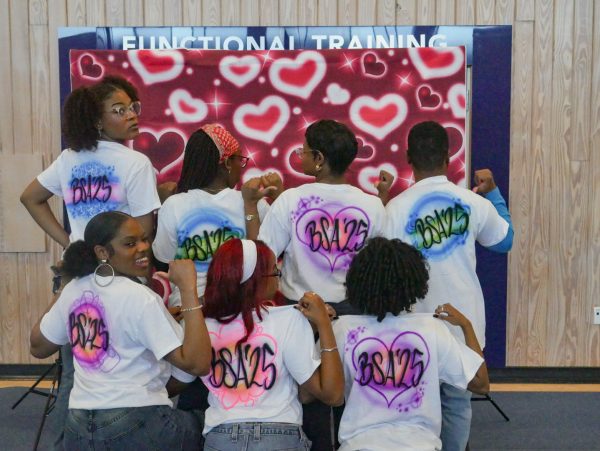Astronomy lecture highlights vastness of universe, hopes for humanity
“Space the final frontier.” William Shatner used to say these words on the hit television show “Star Trek.”
However, before humanity can begin exploring the vastness of space like Captain Kirk, Spock and the rest of the crew of the USS Enterprise, we must first understand the irregularities of space.
Benny Tsang and Stella Offner are just two of the numerous astronomers around the globe attempting to decipher the questions our surrounding universe poses. Well-versed in the phenomena of space, Tsang and Offner spoke at “Astronomy on Tap” on Feb. 20 at The North Door on Brushy Street.
Tsang spoke first, and as an aspiring astronomer working on his dissertation in graduate school, he revealed the findings of his ongoing research paper over the formation of super star clusters.
Tsang began by presenting over an easily relatable subject for the audience: the sun. He explained how the closest star to our own is four point two light years away with the name Proxima Centauri. To put the distance in perspective, Tsang explained that if our sun was the size of a basketball and was sitting on stage with him, Proxima Centauri would be all the way in London.
This is an average distance between stars unless they’re caught in super star cluster. Those stars are relatively close in comparison with the entirety of the universe.
Tsang continued to explain that super star clusters form due to the presence of large gas clouds in space which condense due to the force of gravity. This creates clusters of gas clumps that lead to the ignition of stars. Eventually the gas clouds produce so many stars that they all seem to have clustered together.
He then explained that his research revolves around predicting how certain gas clouds in space will clump together to create star clusters. In order to do so, he uses the help of a series of supercomputers called the Stampede 2 to calculate how gas clouds will evolve. One simulation he ran on the system took nearly two weeks to calculate, which in reality is quite fast considering that it takes millions of years for these gas clouds to develop into super star clusters. One of the most important findings of his research was that he found that gas clumps weaken the force of starlight, which pushes debris away, favoring gravity. This in turn allows more stars to be born.
By understanding the irregularities of space, humanity may one day be able to fly to infinity and beyond.






